Crossing the mountains from Korce to Gjirokastra, Albania
Korce. In the morning, I left Radozhda Campground (located on the shores of the Ohrid Lake). I put gas and drove to Kjafasan Pass, where the Macedonian – Albanian border lies. While I was staying in line to cross the border, I noticed two other Romanian cars stopped behind mine. Many other cars tried to skip the line and go directly to the counter. When I reached the counter, I spoke with the customs officer only using signs and the body language. Everything I could tell him in Albanian was the name of the town I was heading, “Korce.”
As soon as I entered Albania, the scenery changed suddenly: toward the middle of the country, I noticed the infinite folds of mountains and hills. Further on, I descended toward the Albanian shore of the Ohrid Lake and tried to stop in the city center of Pogradec. Pedestrians chaotically crossed the street, while drivers stopped at random wherever they wanted. Buildings featured typical communist facades, boulevards tedious concrete fountains. I didn’t know where to park in that chaos. Therefore, I decided to continue toward Korce. By mistake, I found myself on a secondary road and experienced the first shock of large and frequent holes in the road, impossible to avoid. Eventually, I ended up on the correct road for Korce, along which I constantly overtook donkeys, cattle, bicycles, and carriages.
On the first day in Korce
I headed to Hostel Stacioni, where I had a reservation, and then went out for lunch on the Republic Boulevard. I walked through the city center along the pedestrian Boulevard Shën Gjergji and in the afternoon, I wandered throughout the recently restored Turkish Bazaar.
When I arrived in Korce, the GPS tangled me through the cobblestone streets, flanked by white-washed houses or stylish villas with majestic gates. I parked in front of Hostel Stacioni but the bell didn’t work and the gate was locked. A man walking down the street told me that the hostel was closed. After talking with another man, he encouraged me to knock on the gate, though. Juxhin, one of the hostel’s owners, opened the gate and put me up in another room than the one I had booked: a big room, with a huge balcony overlooking the cobblestone street and a large bed with bright red bedding.
I went out with Juxhin to assist me when buying a local sim card with internet access. After that, he recommended me to lunch at Antik Restaurant, a bit pricey but beautifully refurbished in a stylish villa with lush greenery. I took my siesta while ambling in the shade of the lime trees in bloom that dotted the Republic Boulevard. Classic villas hidden in vegetation, luxuriant gardens, cafes with cozy terraces, and a tiny square with a circular fountain dotted the avenue.
In a short amount of time, I reached the pedestrian street of Bulevardi Shën Gjergji, flanked by communist buildings, among which randomly arose houses made of stone and statues of soldiers dead on duty. I sauntered the main pedestrian street of the city center and found a huge modern clock as well as a theater with a colorful façade at one of its edges. From there, I crossed the street and headed to the former Turkish bazaar.
After walking a few hundred meters, I reached the area of the Turkish Bazaar, Pazari i Korçës, totally restored with European funds in order to receive a new, touristic and commercial function. The bazaar spread around ten streets, with colorful and recently renovated houses, many of them with pulled blinds, though. In the central square of the bazaar, I noticed a few tavernas, an expensive souvenir shop, and a group of Italians wandering around. I ventured to explore the side alleys of the Turkish Bazaar but people looked at me a little surprised, so I ended my stroll at the Iliaz Bej Mirahori Mosque, right at the moment of the afternoon call to prayer.
In the evening, I came back to the hostel, where I was their only guest. Therefore, I monopolized the living room to take down my diaries on the laptop, while Juxhin put heavy-metal music, which I couldn’t take for too long and retired to my luxurious, cozy room.
The second day in Korce
In the morning, I strolled the streets in the neighborhood of Hostel Stacioni, behind the Republic Boulevard. After that, I headed to the historic neighborhood situated behind the Cathedral and there I went to the Archaeological Museum.
The following day in Korce, Juxhin surprised me with coffee and muffins for breakfast. We spoke more Italian because they had been under Italian occupation for a while. Moreover, they were a renowned destination for Italian tourists. This way I found out that the Albanian language is thousands of years old. As for religion, Albanians are mostly Muslims, although Albania would have been the first Christian country in the area, still preserving many monasteries and churches.
During the first part of the day, I sauntered the street labyrinth of the old town of Korce. Right at the corner of my hostel’s street, I discovered a triangular cobblestone square, with a big old tree in a corner. Three old men and two old women chatted near a fountain, in the shade of the tree. One of the old men, Ilija, observed I took pictures of his house. He said something in Albanian, I didn’t understand, but eventually, I figured out he invited me to his house. To enter the house, we had to pass under the laundry hung in the yard and climb a wooden staircase. Upstairs, he invited me to sit in a small salon.
Ilija thumbed through his family’s photo album and explained me in Albanian (with many gestures though). He studied engineering, his wife pharmacy. They had a son, Dimitrios, married to Theodora, who stepped into the room with a little girl in her arms. She spoke good English and explained me they had relatives in America. They also had an aunt in Constanța (Romania), but they lost touch with her during the Communism. Ilija’s grandfather had been a painter, and Ilija painted too and showed me his paintings. On leaving, he opened the fridge and offered me some chocolates from a plastic bag.
I continued my stroll along streets with quiet and picturesque houses. The houses had either a rustic look (with white limestone or apparent stone on the facades), or they were sophisticated villas (with gates flanked by discreet columns, vines or flowers, and luxuriant greenery). Children played football in the street, while ladies protected themselves from sunshine with paper umbrellas. The neighborhood had a select, bohemian atmosphere, both serene and refined.
Behind the Cathedral, I glimpsed another neighborhood with old houses. There, I went to the Archeology Museum, set in an 1890 historic house (not restored, but well preserved), with an interior courtyard with portico and pale frescoes. The imposing building of the Metropolitan Church marked one side of a square, while most of the nineteenth-century buildings displayed a mixed mini-market at their ground floor. The French High School hummed with students’ voices.
At lunchtime, I spotted Bujtina High School (Taverna Lyceum), where I sat at a table under the lush vine, through which I looked at the high school across the street. Everybody ate pace. I asked the waiter for explanations about that dish and he pointed his head (meaning brain of some animal). I decided to take a risk and try the unknown dish. Then, I ordered Turkish salep (a hot beverage made of rice flour and milk, sweetened with cinnamon). In the afternoon, I returned to the hostel and focused on my writing until late.
The road through the mountains from Korce to Gjirokastra
I left Korce and took a short detour through Boboshticë village. After that, I stopped at the Kamenicë tumulus. Further on, I passed Ersekë and reached Leskovik along a troublesome road. I continued downhill to Çarshovë on a tough road, and after that, I went along the Viosa Valley to the city of Permët. Late in the afternoon, I arrived in Gjirokastra.
Juxtin told me that the road from Korce to Gjirokastra was extremely beautiful and passed through the mountains. On the map, it appeared as a national road, a passable one, and it seemed the shortest way to Gjirokastra. Before I hit the trail, I made a short detour through the Boboshticë village, which had houses with cerdac (a covered terrace in front of the house), high cellar, and lush vines.
A bit further, I stopped at the circular tumulus in Kamenicë – an important necropolis from the Balkans, where it was found the skeleton of a pregnant Illyrian woman as well as the one of an old man dating back to 3000 BC. The Tumulus (74 meters circumference) had been organized around a central tomb of a person with a special social status. The dead had been circularly buried in random locations (on different layers and levels – 210 discovered tombs in total) until it formed the circular shape of the tumulus. When I visited the place, the tumulus could be seen only as an encirclement of big and small stones, agglutinated or separated.
From Kamenicë, I launched toward the south of Albania, in the heart of the mountains. I foresaw a road trip that should last a couple of hours (160 km). Soon, I came across the first bad part of the road. I tried to avoid it and entered the highway under construction, where everyone had access, though. Eventually, I found I was the only car on the highway. At one point, the highway almost ended. The ‘normal’ cars were slowly moving somewhere up on a suspended serpentine road. I turned back a few miles and drove 50 meters on an unpaved road. Then, I finally reached the official national road Korce – Girokastra.
The road constantly had holes, waved asphalt, unfinished or simply without asphalt. Frequent and tight turns of the road climbed or descended steeply, or had a large hole right in the middle of the road. Seldom, I could reach the fabulous speed of 40 km/hour. However, I still hoped that it was the only bad part of the road and it would be over soon. I passed Ersekë, a small town perched among hills. Until Leskovik I drove almost constantly, with a cruising speed set to minimum, though. Very often, I had to slow down due to the bad parts of the road, plenty of holes.
Leskovik was a kind of a larger mountain village, with few houses of apparent stone, but also packed with typical communist buildings. I hoped that the road to Gjirokastra would be good starting from there. I already imagined serving lunch (a delayed one anyway) at a restaurant in Përmet town. In the center of Leskovik, I asked for directions to Gjirokastra, but no one spoke English. The only man that tried to help me puzzled me even more. I couldn’t find any signposts in the direction he had shown me. However, the GPS found another way, where there was a signpost toward Gjirokastra. Convinced that there was only one way to Gjirokastra, I launched out on what would become my nightmare through Albania.
From Leskovic to Çarshovë I drove on a picturesque road. Each new bend of the road offered me a varied landscape as well as views of wild horses, vineyards perched on steep hills, and lofty mountain peaks. The road followed a valley that deepened gradually, though. The deserted road, full of holes and endless tight bends, became more and more dangerous and damaged. Paradoxically, the GPS showed me that I was on the right track. However, I didn’t see anybody, not to speak about any other cars.
Having my heart in my mouth, I continued to drive down the valley, on the unbeaten, exposed, isolated, and mostly unpaved road. It was a hot day and I had to constantly press the brakes of the car. Luckily, I had enough gas, though. I rejoiced when I saw a signpost toward the Radovë village, indicating the halfway of the Leskovic – Çarshovë road. After 30 km of somewhat off-road, I had the adrenaline at a maximum level. Eventually, I reached Çarshovë, a village near the Greek border. There, I noticed a new, good road that seemed to come from Leskovic, too.
Down the valley, one could see the azure waters of the Viosa River. Parallel with the river, the road snaked toward the city of Permët, having more asphalt and fewer holes, though. The road tamed considerably, so I decided not to enter Permët town for late lunch and hoped to find a restaurant on the road. However, I ended up eating only some chips, nuts, and a coca-cola at a rudimentary terrace. The waitress spoke only Italian and confirmed to me the mountain road I had driven was one of the worst in the country. From Permët, I passed by another mountain and through Viosa’s River Gorges. In the valley of Drinos River, I finally reached the main road for Gjirokastra, with two lanes and continuous asphalt.
When I arrived in Gjirokastra, I went directly to the local campground in a nearby village. There, I jumped onto the menu of the day at the only restaurant in the area, very pricey though. While eating, I cruised the internet and found a comfortable, cozy accommodation at Mele Guesthouse, in Gjirokastra old town. An hour later, I admired the panorama of the mountains from the guesthouse’s shady terrace. I stared at the mountains and tried to figure out where I had been driving all day long. In the evening, I fell asleep like a queen, in a big bed of wrought iron, with baldachin and diaphanous curtains.
Crossing the mountains from Korce to Gjirokastra is the first diary about the days I spent traveling from Macedonia to Albania, crossing the mountains (you can find the version in Romanian at Traversand muntii Albaniei, de la lacul Ohrid la Gjirokastra). The following post about Gjirokastra old town can be found at From the old town of Gjirokastra to the Ksamil Peninsula. And here are all my Travel Diaries from Albania, the Balkan Countries (x7).
Have you been to Albania or plan to go there? Leave a comment on this post and tell me what you have liked about Albania or what you’re interested to see there.
Want to subscribe to my travel diaries? Just leave your email in the subscription form below and you’ll be notified when I publish a new travel diary.
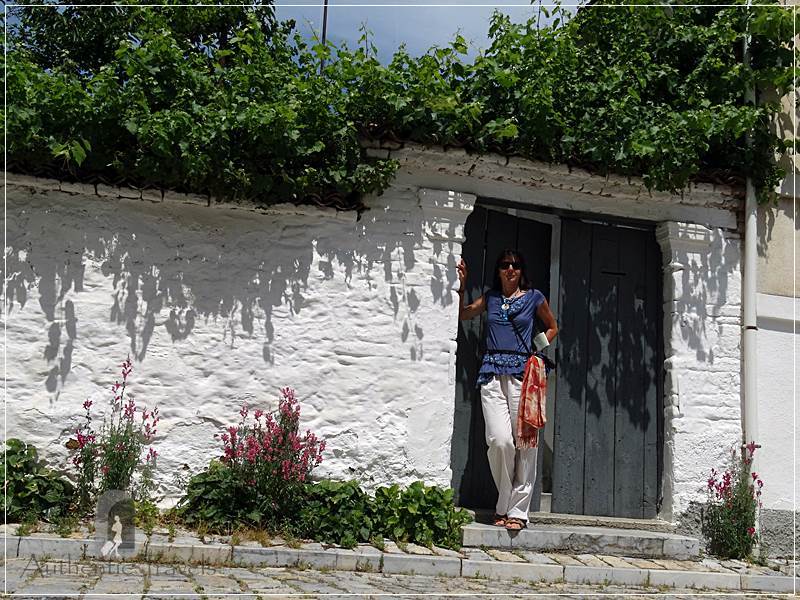
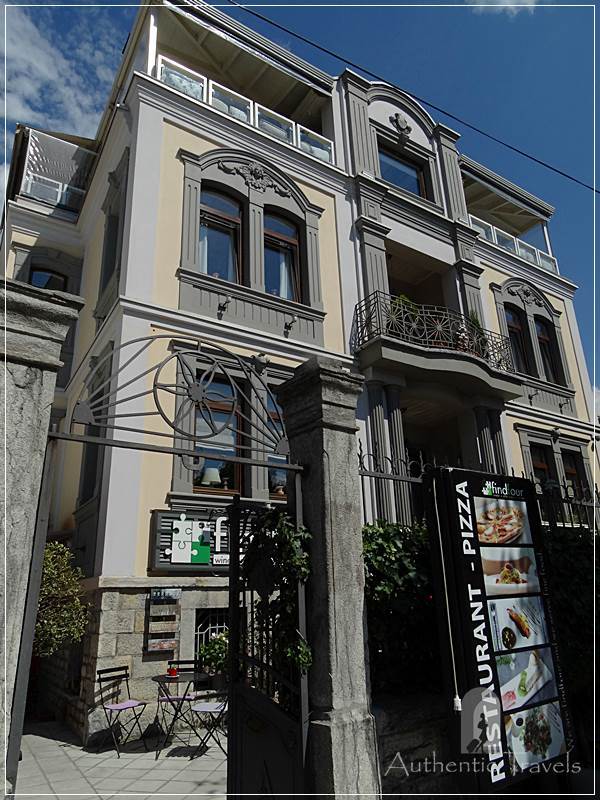
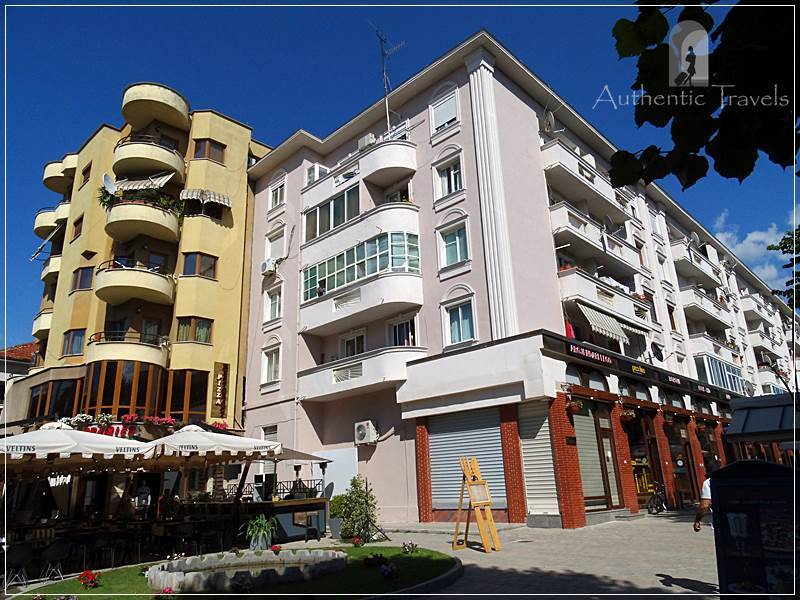
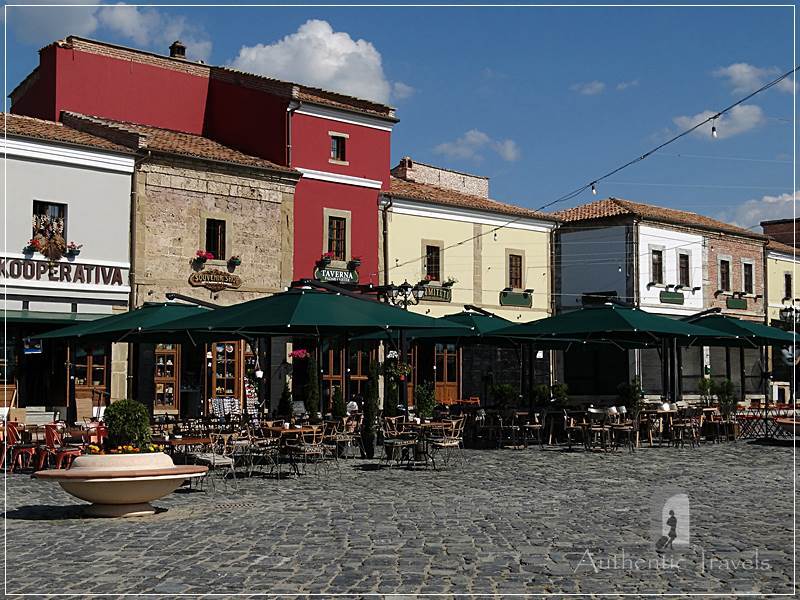
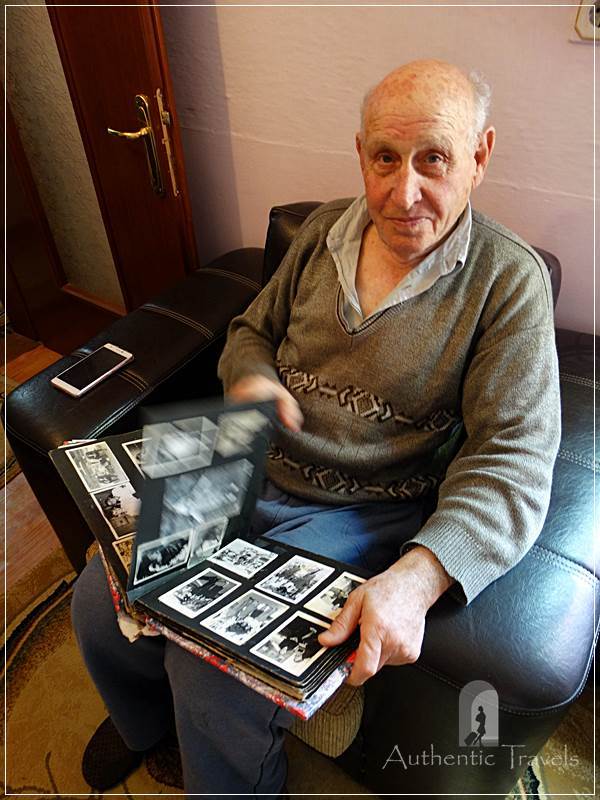
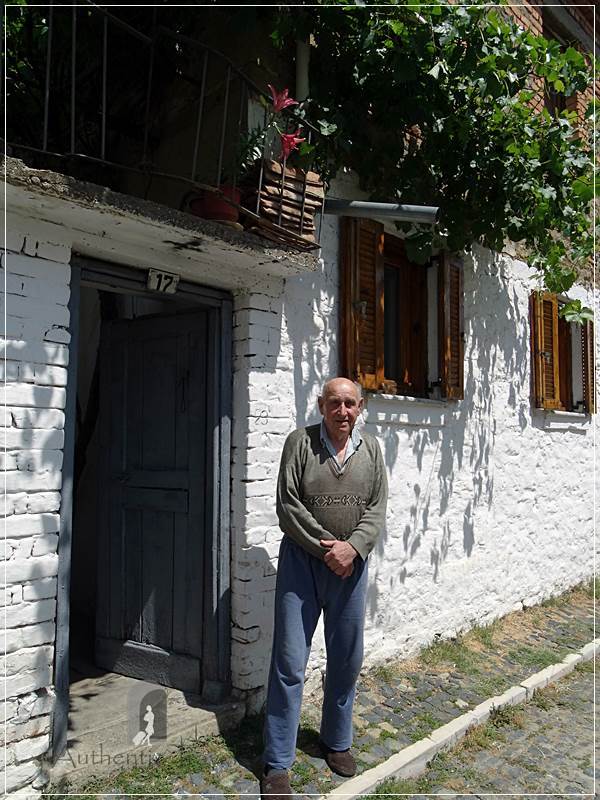
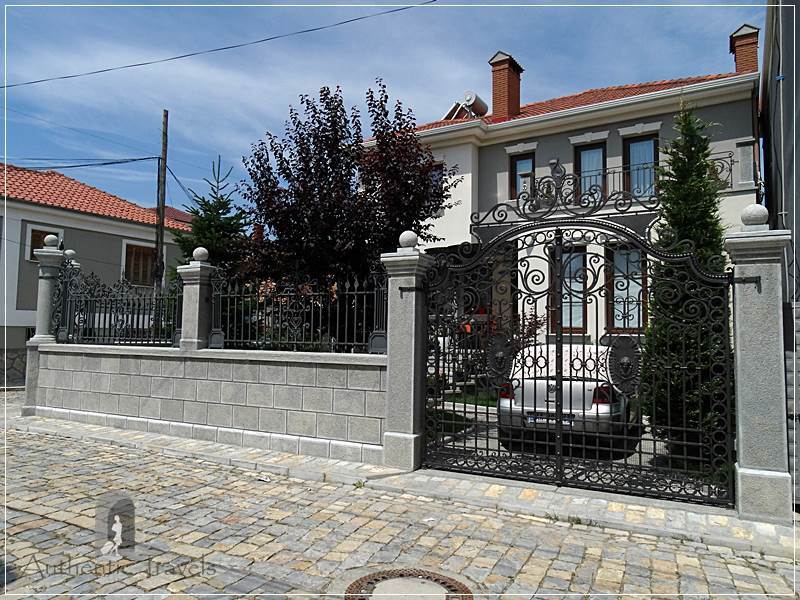
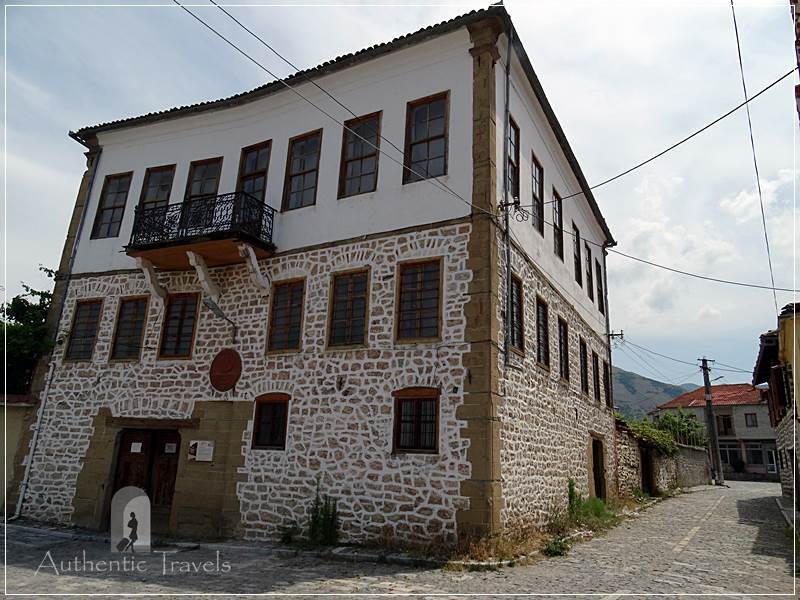
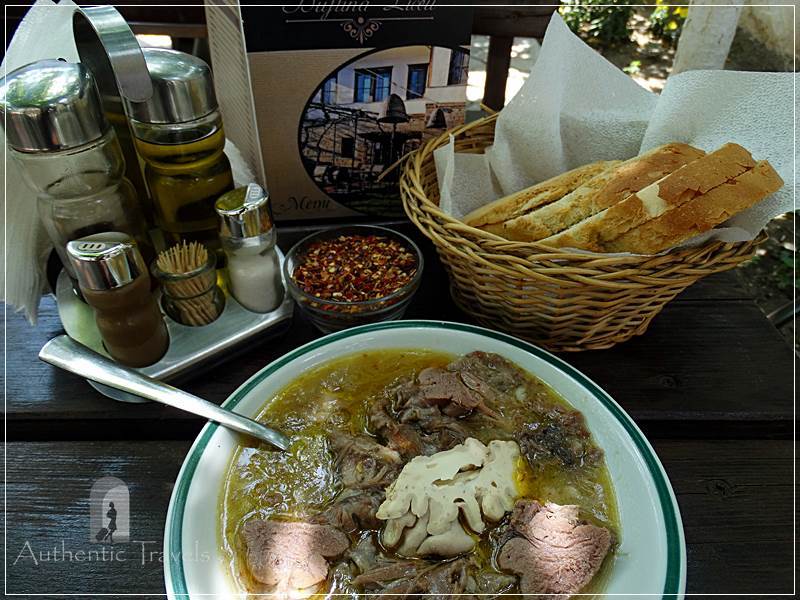
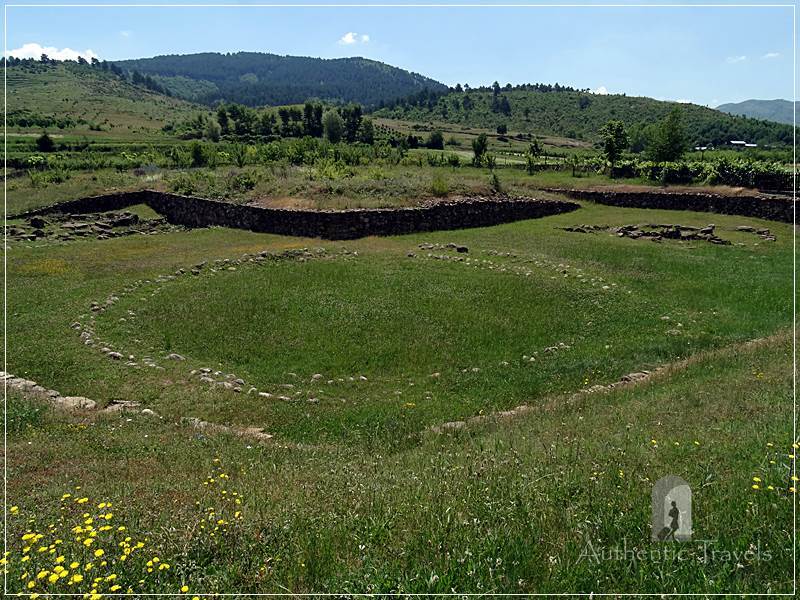
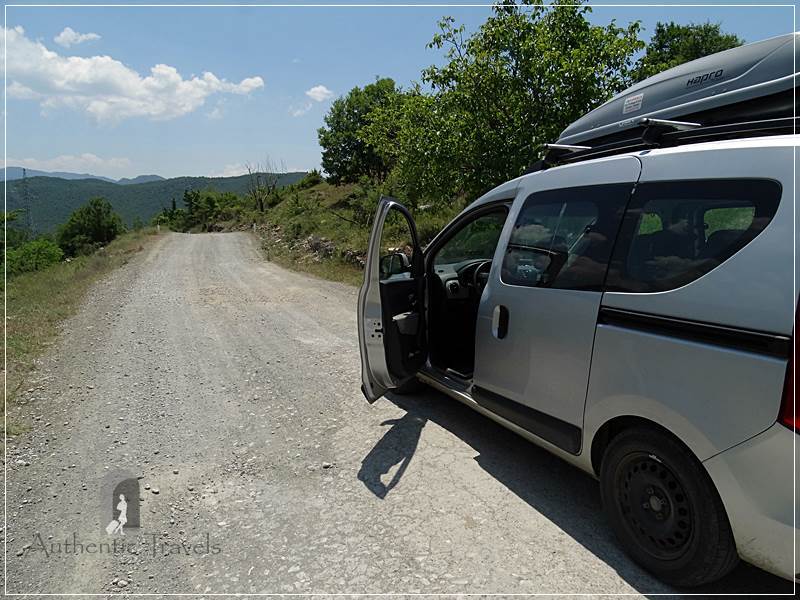
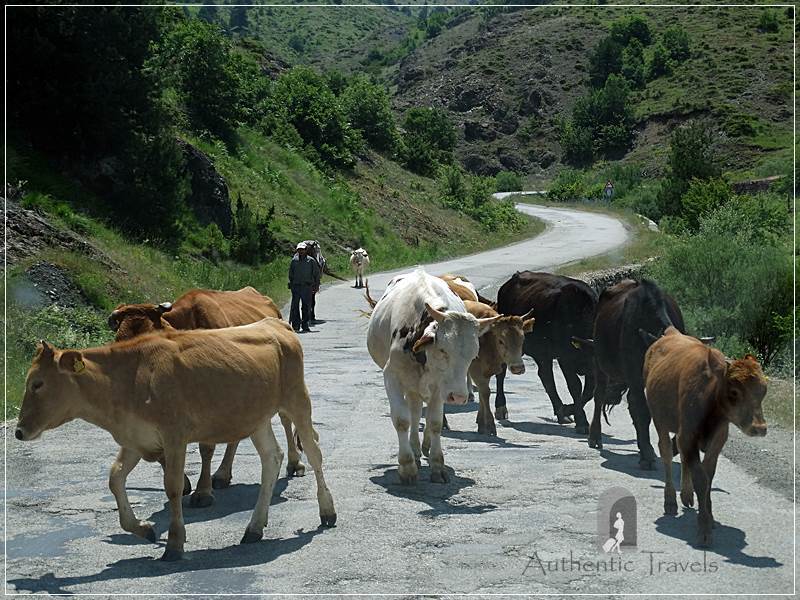
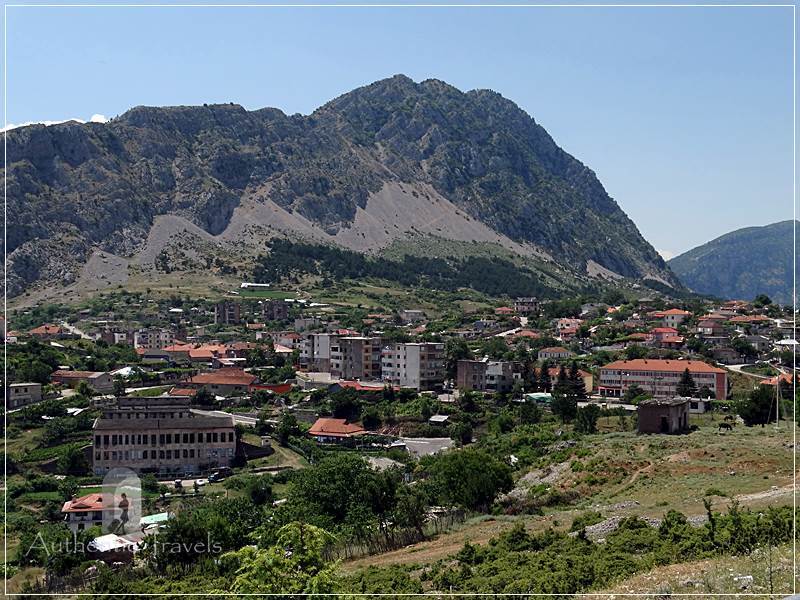
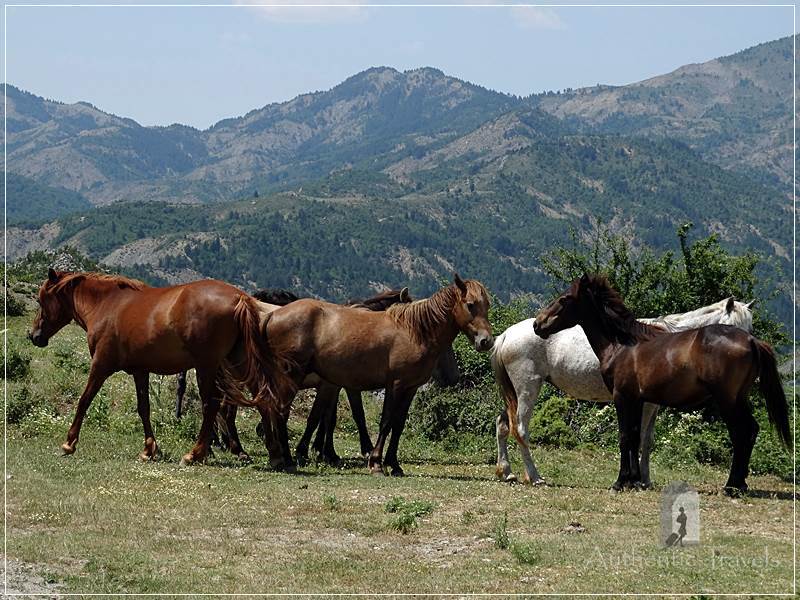
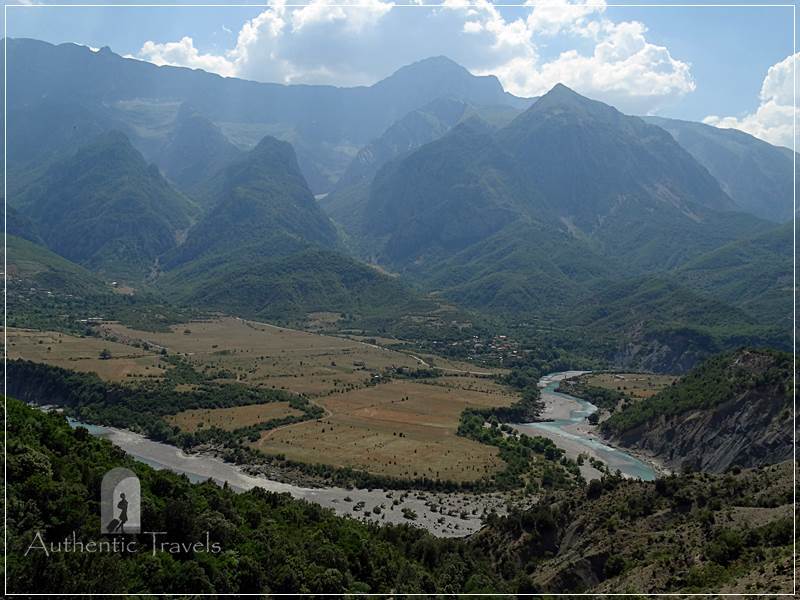
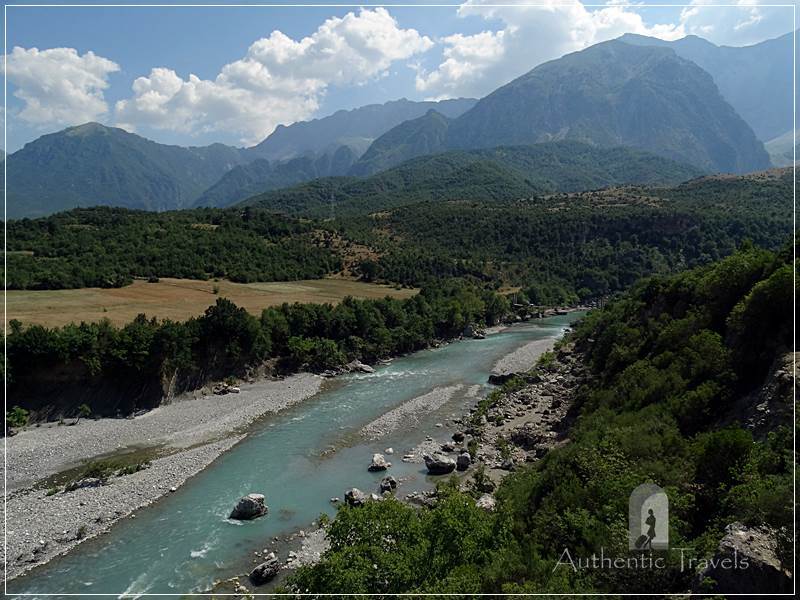
I’ve never even heard of Korçë, but now I want to go! Every time I’m planning a trip to Europe, somehow I get distracted and haven’t made it to the area yet. I’m finally planning a proper Eastern Europe trip for 2019, so I’ll have to file away your notes.
Don’t miss Romania either!
Gosh, it sounds like quite the adventure! I think it’s also lovely to hear about all the people who have helped you along the way. That makes a big difference when you’re travelling in countries like this!
Well, thx God I didn’t need help while venturing on the national/off- roads. Otherwise, people were smilling and helpful, indeed.
I’ve not yet been to Korce, or Albania or Macedonia! However, after reading this post, I’m really inspired to visit. It looks very authentic, with not many tourists there which is a bonus! Your photos are stunning and capture well the landscape and its people.
Albania is a great place of the Balkans. I enjoyed a lot meeting its people and entering their lives for a little while.
I was actually considering a visit to Albania last winter but went to Georgia instead. I really do want to go to Albania sometime though and I can see from your photos and reading your post that it’s a beautiful country. I love the old town lanes and the restored houses of the Turkish Bazaar, The food looks pretty cool too and so do the mountains in Korce. Hoping to get there in 2018!
I will post new travel diaries from Albania. I stayed there for one month last summer.
It looks like you had an interesting journey in Albania. Normally getting lost can be a blessing because you find fun sites you might not have seen before but it sounds like you found lots of really bad roads. Love your photos and it sounds like the people you met were wonderful and friendly.
After venturing on that troublesome road, I avoided all the non-touristic roads in Albania. I love going off the beat but in this case, it would have been something that is too overwhelming for me (technical stuff for the car!).
What an interesting mix of architecture! Your first stop reminds me of the white villages in Andalucía. It sounds like you covered a lot of ground! And how lovely you got to meet some friendly locals and really the day-to-day life in Korçë. I love the photos, especially from the valley.
Thank you, I am so glad that my photos have inspired you.
You are so adventurous! I would be so scared driving down an unpaved road with no signs. I tried that once in the US and I panicked when I couldn’t’ find my way out of the area (I eventually did. Phew!). So happy to hear that the people you met along the way were helpful 🙂
Well, I though that the road was more troublesome to get back, up the mountain, so I preferred to drive down and hope for the best. If you have done half of the road, don’t turn back!
I’ve been attracted to the idea of traveling to Albania more and more this past year. And after reading your post, I think I definitely have to head there soon! I found the story of the gentleman who invited you into his home so touching! I love hearing these sorts of personal encounters that can happen if we are open to them in our travels! Also, you are very brave to have tried the brain! As a pescatarian, I think I would have passed! 🙂 🙂 By the way, I’m curious, why do you think you got surprised looks when you were walking down the alley by the Turkish Bazaar? Thanks for sharing!
The Turkish Bazaar has been rehabilitated only recently. That means its locals are not very familiar with tourists. They live there but seeing tourists/travelers it is still something new for them. Why would someone wish to see where I am living?
I don’t quite know what I pictured Albania to be, but Korçë looks like quite a beautiful town to explore, what with it’s white washed buildings, and colorful and historic facades. How fabulous too that the locals are so friendly and welcoming to invite you into their house! Having the opportunity to learn a personal history like Ilija’s must have been an honor – a fabulous way to immerse yourself too. The mountains look beautiful but you must definitely have a penchant for adventure choosing one of the most difficult roads. Misadventures often become our greatest stories to re-tell though right!
I think that the road has chosen me, not the other way round.
I love road trips when you see the drastic changes in scenery, not cool to get lost though. Walking around and exploring Korçë must be so interesting. So cool you could speak Italian to them, I would never have guessed they have been under occupation. I need to learn a lot more about Albania. Thank you for this post, inspiring.
You seemed to really have a great time in korce. I love that you owned the room in the hostel when you get back after ambling around. I also love walking around and checking all the neighbors near the Hostel whenever I’m in a new place. I hope I can go here as well as I love hiking and crossing mountains. Thank you so much for sharing this with us.
That sounds like a fascinating journey. Meeting locals like Ilija really make the experience special, how kind of him to invite you into his home. I’ve never been to Albania but would love to explore the area.